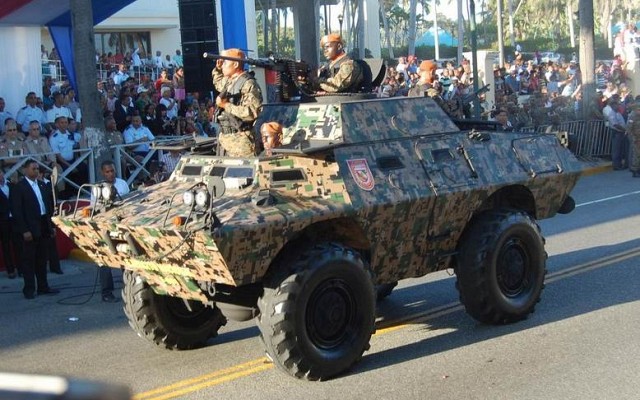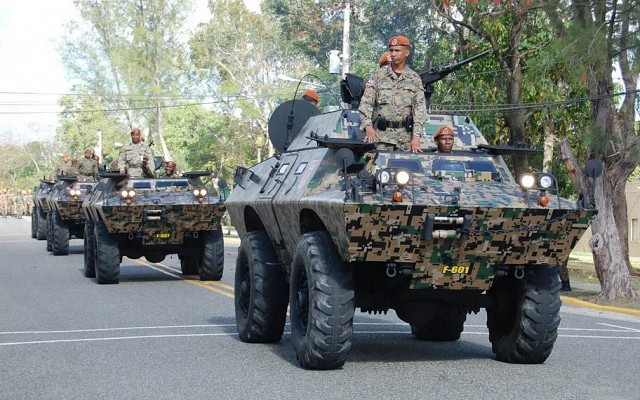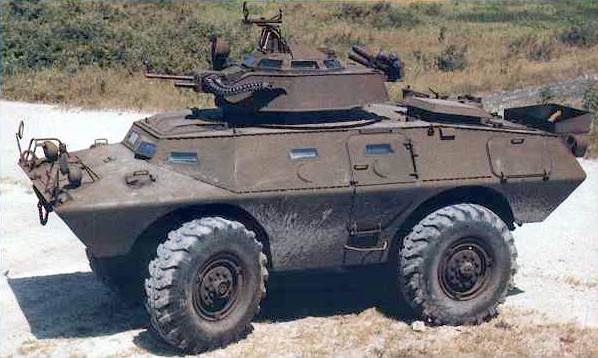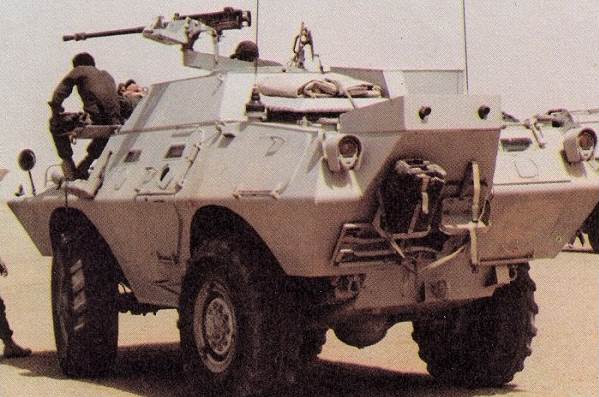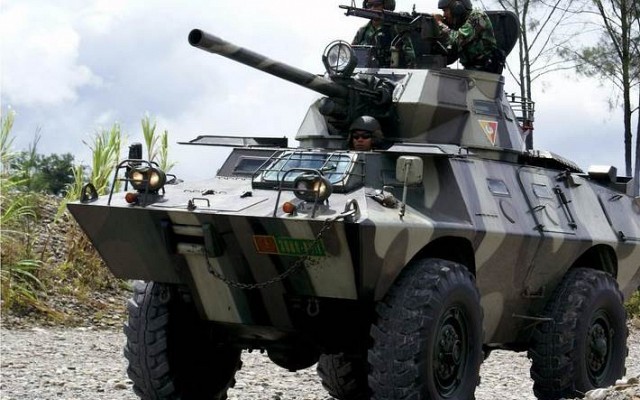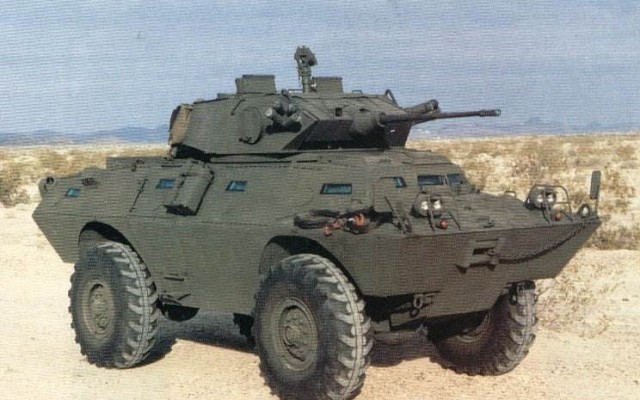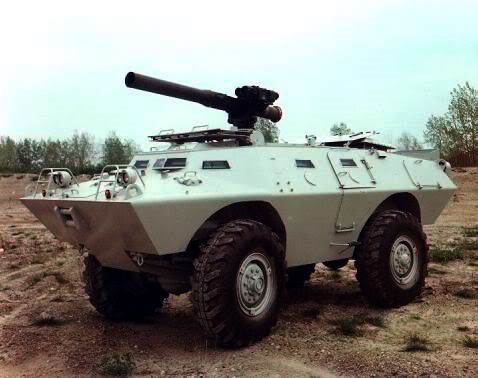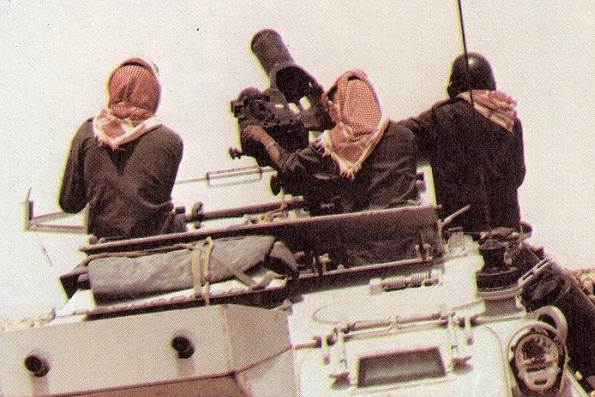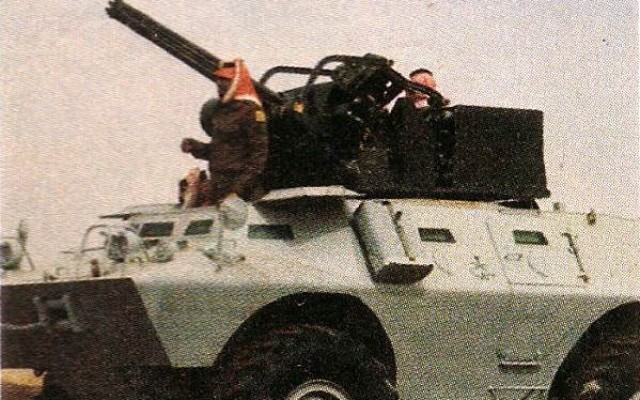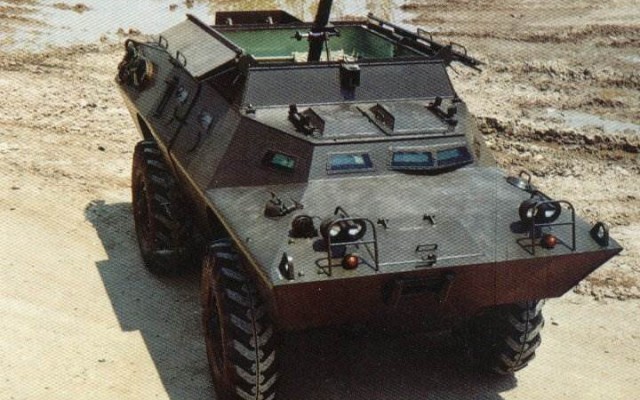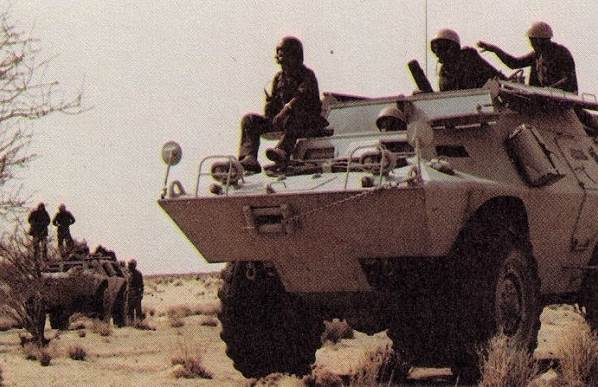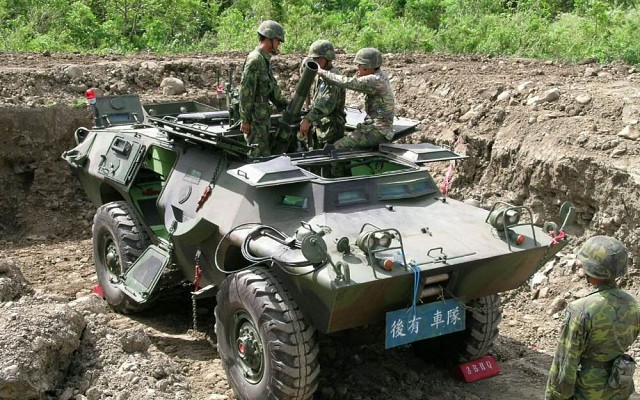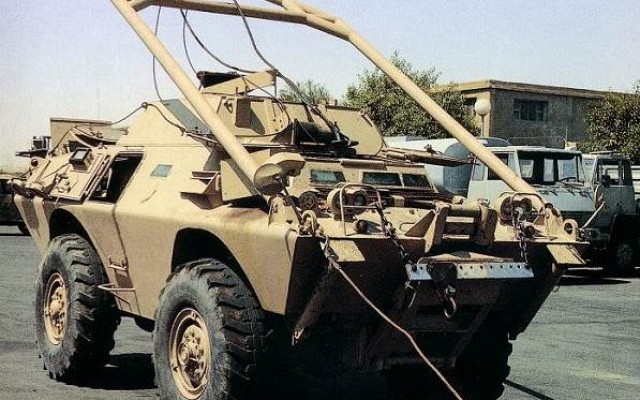V-150 Commando
LAV-150
Overview
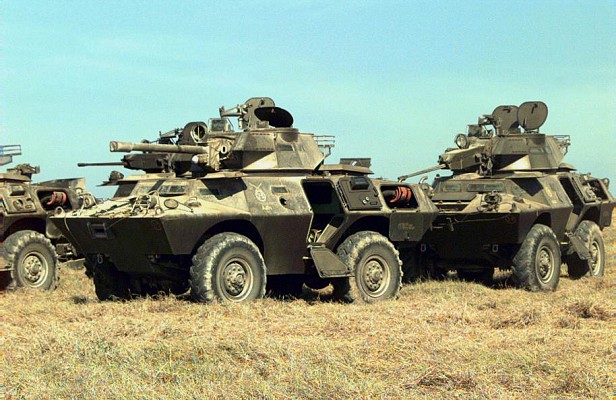
V-150
Haitian V-150 Commando with 90mm MECAR cannon on the left and 20mm Oerlikon autocannon on the right.
Source: US Air Force (A1C Sean Worrell) -
© public domain
Armored personnel carrier
Tank destroyer
Mortar carrier
United States - Textron Marine & Land Systems
Philippines
Taiwan
Description
Introduction
The V-150 Commando is an armored car of US origin. It was developed as a private venture by Cadillac Gage for export sales. The V-150 was based on the earlier V-100 and V-200 designs. Unlike the earlier V-100 the V-150 was never adopted by the US military.
Design
The Commando uses an angled monocoque steel hull of the same dimensions as the V-100, but combines this with the 5-ton axles and automotive components of the larger V-200. The driver and commander are seated in the front, the crew compartment is located in the middle and the engine is mounted at the rear. Hatches are located in the roof and there is a door on each side. Various types of turrets can be fitted. Firing ports and vision blocks allow personal firearms to be used from within the vehicle.
Firepower
Most versions of the Commando are armed with one ore more 7.62mm machine guns or 12.7mm heavy machine guns. Various nations acquired models with a two man turret with a non-stabilized 20mm Oerlikon 204 GK autocannon. These are able to engage all types of armored vehicles except tanks. In the fire support role the Commando can be used with a two man turret with 90mm MECAR or Cockerill cannon. These carry a total of 39 90mm rounds. Specialist weapon carriers were produced in limited numbers and include 20mm Vulcan air defense vehicle, tank destroyer with TOW missiles and 81mm, 107mm or 120mm mortar carriers.
Protection
The monocoque hull made out of high strength steel provides protection from small arms fire and shell splinters over all angles. Various models use pintle mounted machine guns that have the gunner exposed while operating the weapon. Smoke grenade launchers are optional. NBC protection systems are missing.
Mobility
The V-150 Commando proved to be highly mobile on roads. The large roadwheels provide reasonable cross country performance. The exact performance depends on the armament options and type of engine selected by the client. Speeds of up to 100 km/h can be attained on roads. The V-150 is amphibious and can propel itself in calm water using its wheels.
Users
The V-150 proved to be the most successful version of the Commando series of armored cars. At least two thirds of the nearly 3.500 vehicles are of the V-150 type. This was produced in about 15 variant with further options such as engine type differing per client. The V-150 was never adopted by the US military. The main recipient was Saudi Arabia, acquiring over 1.500 for the army and national guard. These are used as reconnaissance vehicle, armored personnel carrier, command post, tank destroyer, air defense vehicle, etc. Many other users are located in Asia, the Middle East and South America.
Chassis types
The V-150 was developed when the V-200 was already in production. It can be considered a combination of the V-100 and V-200. The improved V-200 automotive parts were used in a V-100 sized vehicle.
The hull design was continuously updated with minor improvements. Different engines were offered, such as a V8 gasoline and V6 and V8 diesel. The only major redesign was the stretched V-150S that is about 0.5 m longer.
List of chassis types
Variants
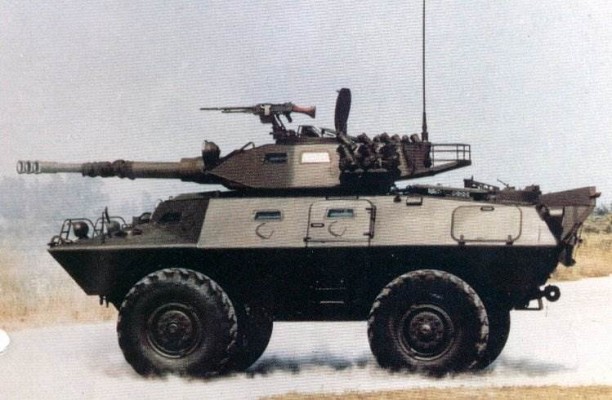
V-150
Side view of V-150 with 90mm Cockerill gun.
Source: Unknown author -
© copyright lies with original owner
The list contains production model. Prototypes existed with even more armament option. These include the UGWS turret or Delco turret with 25mm Bushmaster autocannon.
List of V-150 variants
Details
Media
Commando family of vehicles
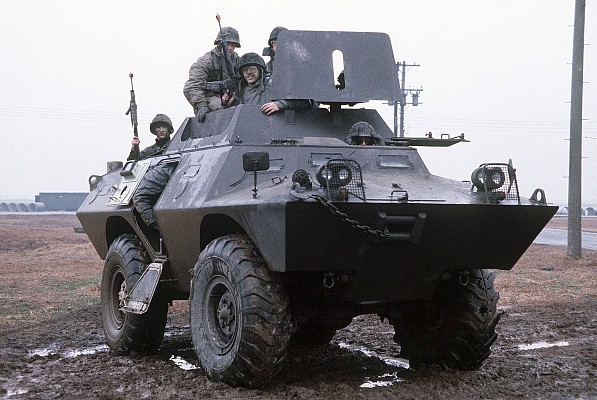
V-100 Commando
Earliest vehicles in the Commando range. The V-100 was produced mostly with pintle mounted machine guns.
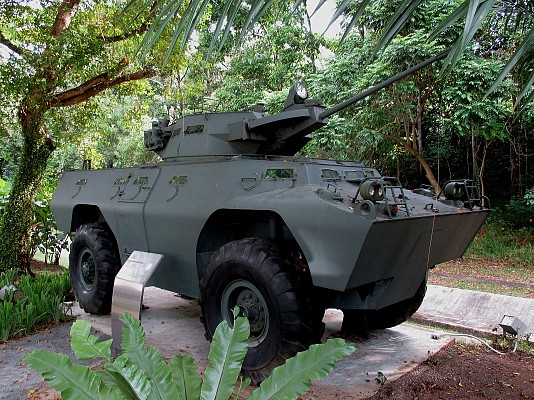
V-200 Commando
Enlarged V-100 with improved suspension and automotive components. First Commando to be sold with 20mm Oerlikon autocannon and other variants.
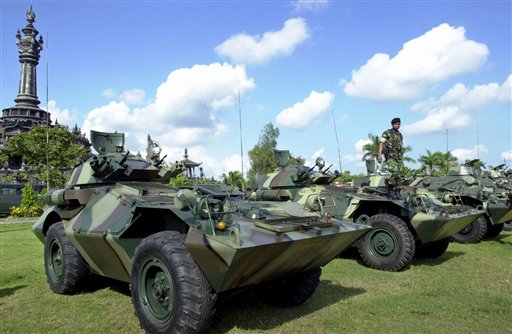
Commando Scout
The Commando Scout is a dedicated low silhouette reconnaissance vehicle derived from the V-150.
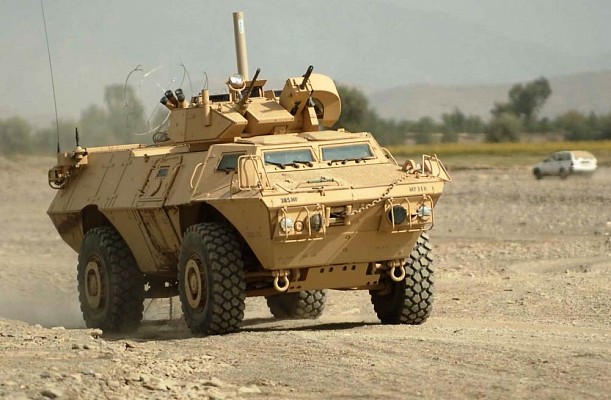
M1117 Guardian
Further development of the LAV-150ST to meet a US military requirement. Features improved mine protection, applique armor and an UGWS turret.
